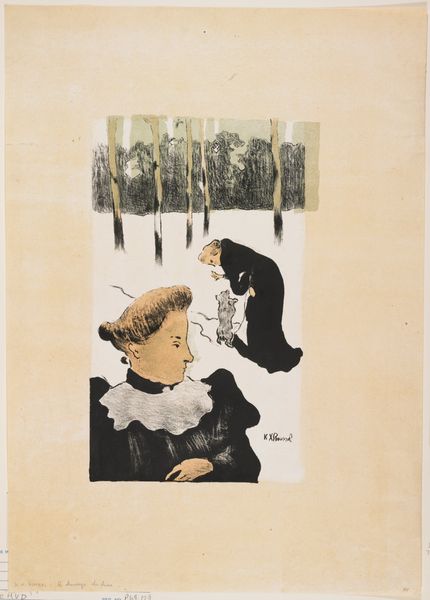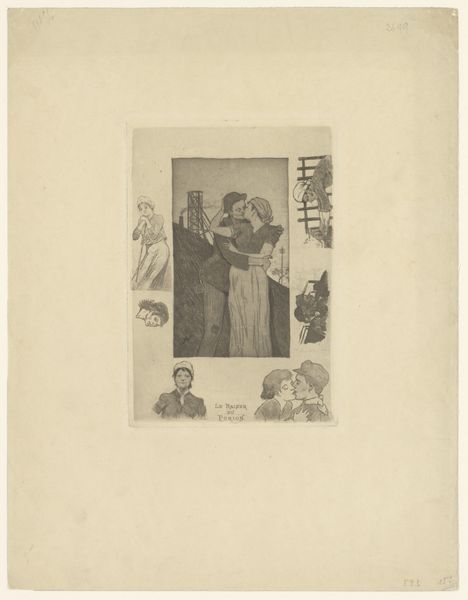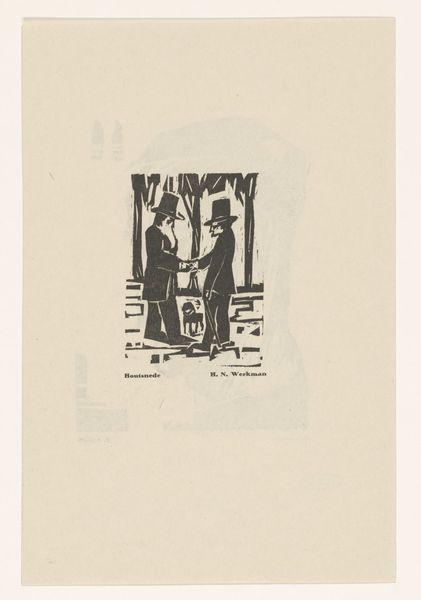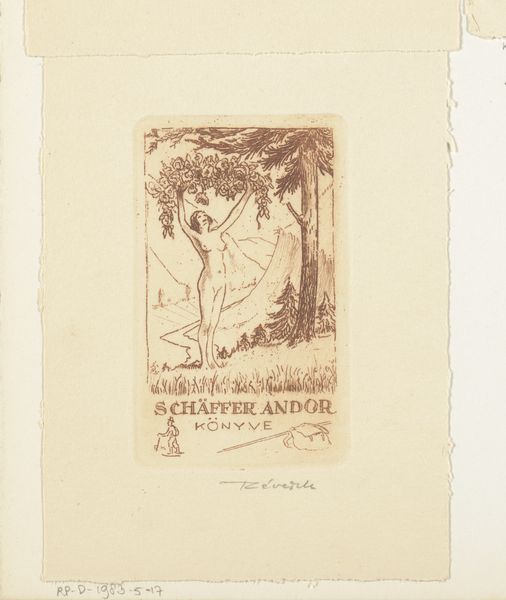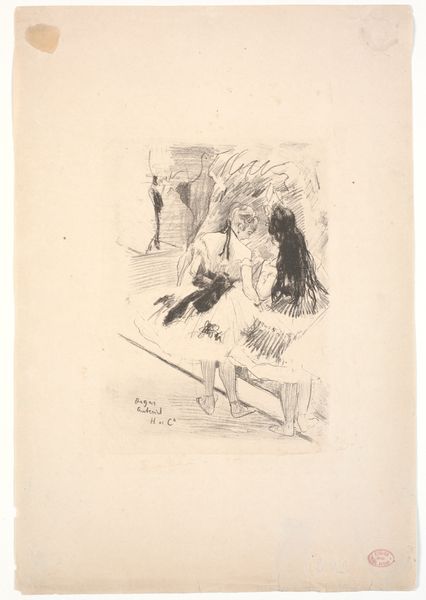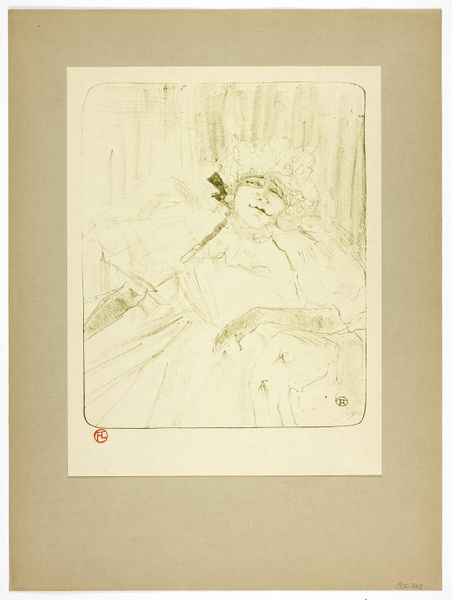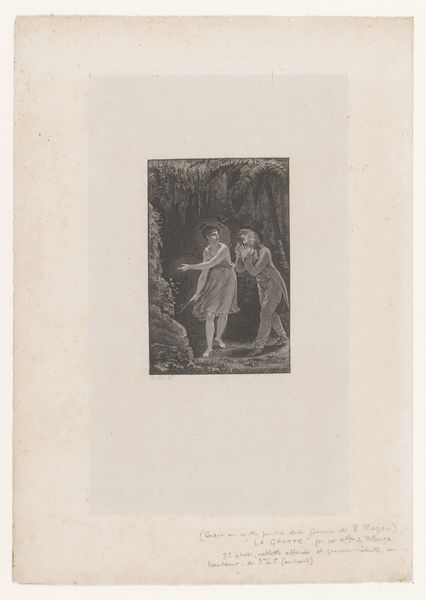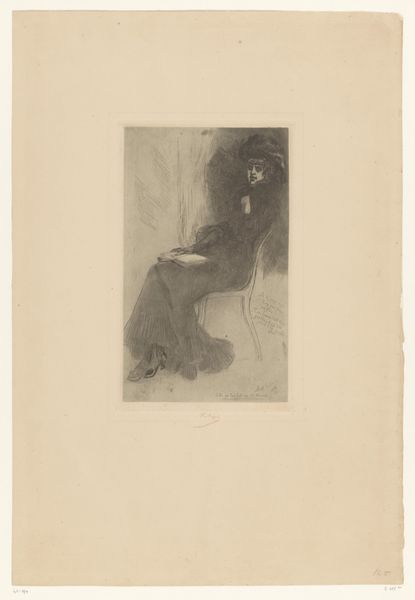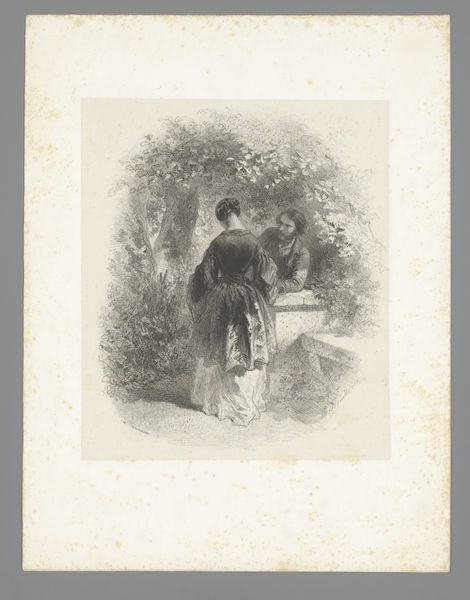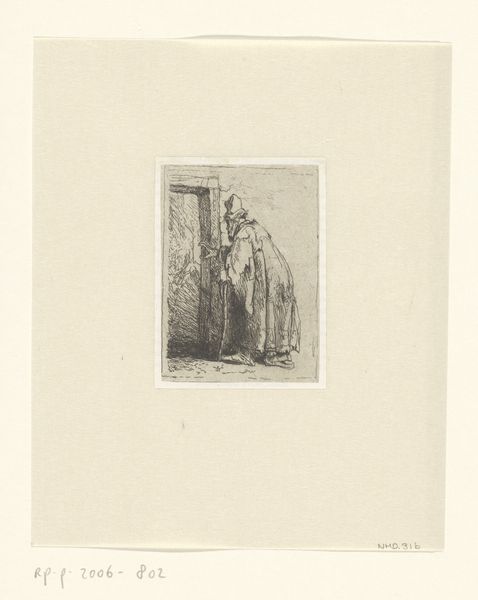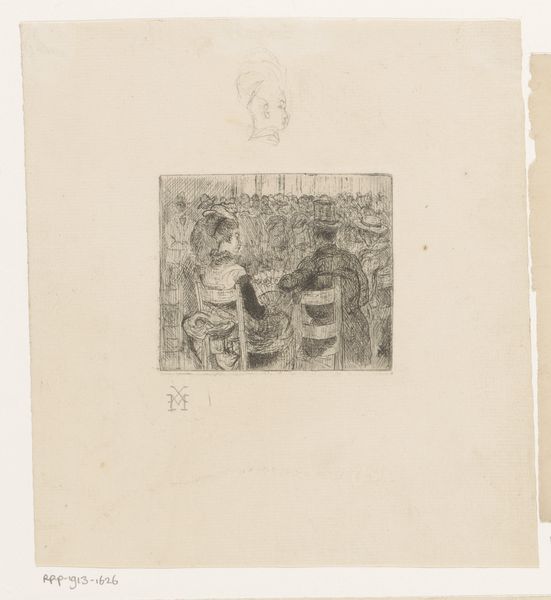
lithograph, print, paper, ink
#
portrait
#
lithograph
#
ink paper printed
# print
#
landscape
#
figuration
#
paper
#
ink
#
symbolism
#
watercolour illustration
#
watercolor
Dimensions: height 575 mm, width 418 mm
Copyright: Rijks Museum: Open Domain
Curator: Let's take a look at "Two Women and a Dog in a Landscape," a lithograph created by Ker Xavier Roussel in 1893. The piece employs ink on paper. Editor: Stark! It gives a strangely ominous feeling, despite what seems a pleasant, everyday subject. Is it the limited palette or something in their gestures? Curator: The limited palette indeed accentuates certain stark contrasts. Look at how the deep blacks and strategic use of greens establish form. Notice the composition—a foregrounded bust in stark contrast to figures recessed against the landscape. How do you perceive the figures' orientation? Editor: Yes, one facing directly while the others turn away…It hints at division, doesn't it? I see late 19th century bourgeois anxieties simmering beneath a pastoral veneer. The industrial revolution brought huge societal changes, but there was still intense social stratification and a push for ‘traditional values’. The dog, a common status symbol, also reminds you that people wanted to look wealthy. Curator: That's an astute reading within its socio-historical context. Art production in the era became increasingly aligned with these shifts in class awareness and visibility. Roussel leverages semiotic structures typical of Symbolism; he doesn't overtly depict action; instead he provides motifs pregnant with ambiguous associations. Note, for instance, the dog. Editor: Interesting—so you would suggest reading the figures and animal then as carefully staged symbols, rather than spontaneous figures? But there are only two visible figures for a title which promises us “twee vrouwen.” This gives me a sense that art historical readings and close readings risk obscuring a piece's inherent openness, even playfulness. How might different publics receive Roussel’s statement today? Curator: An important question and concern. But consider how those apparent elisions still reinforce Roussel’s formal strategy: they deliberately disorient us as a calculated aesthetic choice. It pushes us toward subjective contemplation… a silent reflection of ourselves perhaps? Editor: You may have convinced me about those deeper resonances after all. Curator: The play of open possibility remains a valuable experience in the encounter with an artwork. Editor: Absolutely, each viewer potentially writing their narrative into it.
Comments
No comments
Be the first to comment and join the conversation on the ultimate creative platform.
